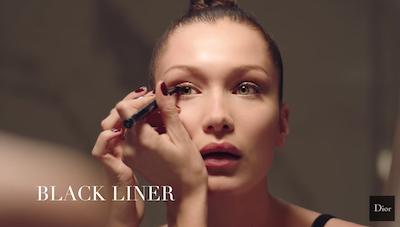High-end beauty and personal care products will likely dominate the beauty sector for the foreseeable future, since they have outperformed the standard two years in a row, according to a new report from Euromonitor.
The insights allude that the premium beauty industry is now leading the way, with an almost 6 percent growth. North America is leading with premium beauty and personal care prospects per capita spend.
“North America dominates premium beauty and personal care prospects per capita spend,” said Nicholas Micallef, senior beauty and personal care analyst at Euromonitor International. “Asia Pacific leads absolute growth over 2016-2021 (<US$14 billion) as more consumers from its large demographic trade up to premium products.
“According to Euromonitor’s new research, premium beauty and personal care outperforms mass segment for the second consecutive year, growing at nearly 6 percent,” he said. “The future looks increasingly premium.”
Premium beauty
China is also heavily contributing to the premium beauty industry. The United States and China together are likely to supply more than half of the industry’s revenue growth by the year 2021.
The luxury beauty sector will see $20 billion in absolute growth by then.

Dior's promotional image
Premium product advances have spurred growth throughout the entire beauty industry, with many low-end brands attempting to replicate the high-end experience.
Consumer behavior is drastically changing, with priorities leaning more towards experience rather than owning, with product targeting also becoming significant. Healthy and eco-friendly lifestyles are also having a substantial impact on the growth of premium beauty consumption.
Digital is pushing these ideals forward, while at the same time luxury beauty is becoming more accessible to the everyday consumer.
Luxury beauty was also a major contributor to color cosmetics’ positive growth in 2016. The sector saw a 7.2 percent increase, while skincare slowed to 5 percent, but premium is likely to grow in both these sectors.

Staz Lindes for YSL Beauty
Beauty marketer Estée Lauder Cos. reported net sales of $3.21 billion for the second quarter of fiscal 2017 ended Dec. 31, 2016, for an increase of 3 percent from the year-ago.
The conglomerate, which holds licenses for Tom Ford and Michael Kors, saw net earnings drop from $447 million last year to $428 million for the second quarter of fiscal 2017. Estée Lauder is in the midsts of its Leading Beauty Forward initiative, announced in May 2016, an effort that will see internal restructuring and a transformation of its global technology infrastructure to become more efficient (see more).
Additional insight
Due to the resiliency of developed economies, the global market for luxury goods is expected to be valued at $374.85 billion by 2020, according to a report from Transparency Market Research.
Up from $296.15 billion in 2013, the luxury goods market has seen a 3.4 percent CAGR between 2014 and 2020. Luxury’s optimistic and healthy growth is attributed to an increase in ultra-high-net-worth individuals, volatile established markets and increasing GDP in developing regions such as China, India and others (see more).
“Premiumization is driving standards across all levels in the beauty industry, from the low-end mass segment to the prestige level,” Mr. Micallef said. “Changing consumer lifestyles and priorities are the key drivers, including the quest for healthy living, environmentally responsible consumption, ‘experiencing’ over ‘owning,’ and demand for targeted products.
“The digital force is reinforcing these lifestyle changes,” he said. “As standards improve across the industry, luxury is becoming more accessible to the ordinary consumer, notably millennials, who tend to be the protagonists of these lifestyle changes.
“For the wealthier consumer, this is more pronounced through personalized services, such as smart diagnostics.”
{"ct":"AmzKknPhmYqd8EW1SucX3kmT709\/eH3r4K2hIkBBhDXjKAO7wS14VmQ8vcQ9Xu6BaEs+\/sA3A4tWh2XvqvsqGW4w2q8YC5wbPiuLRWlb65\/KlkeqNsLt4fYBtx8836\/VZtlnHdvrn9iCL5n8hS32spG+l4Z4ldIFRm0shBXU4dhF5ZIvhNdsyabARw5Kgwwo9K0jw6SSGm9GbOJnkvn+mIE80favLxgjYBLVoHRc4GjWa1Yfmdn9I9iX4bxXdeHnyv9umPQ2l427YpXggHshlYvFGT6CrbEZcoH8yVVpG5pGQLu+XiRdBzwVHczkt09dhAqyLJk0xrBRqdyZspEGdb6UDldydKV1G7x5OrpkF7E5XEiHindfjd4PRSepA50rPqnIYmnQ4pEpUIwhutLDAk9lyh1NxelPS0A85HVwbR5ZNwCjF6MKugNR1ReFKtI2OUpA\/wDykHi8htaLhJ5rrexRKOIrur8hd5didNVOkU0hj+\/6ji0ESaoCXa3gg7YOhd9lG52e\/18SA0Y98wswnvsp2zI5RI4JKog0VJqzbThiAo9wvRqB2oe4X6L+i+llRkD51OJYCydkmI7tQRlxTyu8ApzaQTsIpyB9S9Jw6Sm+AL4z5wlwcWo64+v3I3PiUcjOsbYgkgVcJlZ7Pq9HEUpECbqgQmZDMMnT9lNIfYMKFDYxEnKFbvVwtbH2YePqxN9uIYvj2dxM18XfRie+4AR12NpNLOBih6eaj7RAlXSlWojySNfIw2fVf5ku5BxdzGxLb5vtjF1vf1liF1LizaSADmoMiIfCLA4\/8EPlk3A49Q3tbIold\/yLF5MBX4dsCF\/G3d2YzalJGcSZCVJZlY4U8J989od4xKNvpclS+dFNJzdfwbUYCkN\/ushBvatm4amuwIv3ODJKIuOLTKeRVxIP1MC7HxPzq3WA3v8N9P\/zSkam\/fjGToX3cmNzjPetp6FNb\/\/gXW0Gr+xK4KH\/y155wMJQH8N+UFP4WVxbD1JQ\/YtqYPdONH4vYq+QFkoHQdYQ5+1iZ3TS4GqPk9ZuOib3Sf8ikdLzSJGFTaZmGgygZZjvKxH32vT8tntE52zdGqGd1ZzmG81960j4GOG246J3QQKdB+7DERyVMHRN0Drt19C3HsGwr31na6AcVv8Z\/DJY5VPs7uEKT0DpDADwuB7p\/gNPXFOExmZVNFe2fMJFoD4bimE1yFzeIV2oGMYA2XhKAKZ3ANtnRYq8NO+9+iONBhd6FOyVZvXVbZYzUKlK4EU0cJSesza1PImKJYMB2FozP0mMwUhiUiMudJe\/nvafyal039oyrkh59MC+mnmPDI9SEwKh2rPS9K5QEsUEILa3SCeM4zns7gWsG\/4vP24ULnTj8mYn0WT5E\/BlvVou9Jxoi9m9eXeoKjmyiW9u8\/MVSghCwpYis3+D3C6AmfrMQRv6fSEZrKDWtiPuc7fwSORAggkcyxrJeT\/7Hi1QXQP4COV+jVKbmbMscLc9cJsUqpjGUE95xBvm7TQiKBNRanYGXhjX6M0hwTariWvPMVgdhum7uS11n9\/ZJYwL8utAKaXyGl6BnxxKE5ZXqTmsbjUOuxFI+mH6kBgoRzT2gQ6AVp+2m6UKJYNIKAd37hhP2YL8Qn8+GmizSIKUIRn+vn9NfK2hEBXocDNWDwKXKn6pyz2EIT6SbDhOHJfJruZmTwhQzLmmYUUc3MJzJIMsv8tWMfrsL3KJgg4Viw\/4fhQleOIe1J9e3CO52TlOegECBlaCEmjU4YUBn8+JinNoCvmVwHLz7lupAHRvk\/gHTqdCugUivfFpI6vbkb5RCa\/IJ7sBaJgvhiBHeTHVU97FVnmdsXUMTAoWou0gefoocq+2kTFhdxUxru3rGQYbWYkleJOUandLX06czgGV8r6ppw\/FF4U3zFIO72vIw9ts+WSpbXm99dfs70VA8U2gXNiL+OyvuZis+fL7ngkP+UbpTcgvxNNttCdIlcOmAD+LaDzgRmpXHw38MmQ+ZwVzDM+wuVYc35qZPeu6\/CbF3vmQUUFaquC+uUIjNBEOh8ER\/C\/039HXkjH8wecUyHLcZNtTiRX6PK3dOp8iyREpT+g9+IQCKrvchhIkRh2ZO2uuofN\/vZXQJEqiroH38Tl\/a\/\/WFsK3fM\/uFVgDEbPg5JpYtdEYMWlSU5vUNHK6OS3sUcDT+Y\/a1dmuGJ5YY2WLfJ8SsxOjB47pLyDHN1wwO2UjxmpXo2qKIoIKfyT0A4R\/EjdBjmhurKZ2FPHO5JB0+Xm9T35obnV4xtxIGHJqcFIc91sOWGGeCV8JEcLfl5kMkRQ4Wy2PY3qa1vgUBMeojH4HD+2lG+7h5EBQfNnRzSX4DB\/JwEnFplWuCb+hpLaCYBmWi6LtBcZiO\/9pNOxFOQy1sZmxR7xEzIr59njtNvnZ0+BuwYFTSiI4OE9rp1RnNHF41IBX0UIykTT\/jaw7i6kVvYyLCoPiqclCQV34z0xUNklqeulXQdO05bZI99Ai1+Fz4Eabtq5XpnPS+X4EQBBl0J+VLMZ2FbiuW68NiTm35QKHAUTLt7b99akvtr1hBxI0k1Wm87vtrPjRvoShkGzDADAI60UXeFs50TBmzxmzxeXDJLvyiSN9MEdPjteqSlOD0oikR5WGydlZnnAVaSFOk8EviJYjdZi0UIsfPUjq8jUrX8pGIHM8LOHPZmKbXT8lUQf3n0DGDMKaVKdbPZIKMa+5aJTnv2DazsEAiea408qdoKRUNMawD57iPkFFxQ6NEB9oaS0qHgZd9376dvfjOqTNJB1dgnp8ksIYJR5w+RxFNVljzYSJOzRjGjHaRVOSNbvfqbveuoTvOxTcR92eo\/26u89LHkkyZs3qshboZLuga8Q\/wy7SL7XtlAciqZ4CyshpTg1jOOQGAF7zZUQU5su8qt2fwGIU9WncI+Q7pHcJ6gfKKEtvb6rhS547k4EYkG6xBItpyVFXj7h+tVAy2t25Vu42HJMDq9f66fGyabFYrDVRMbAsnB4FjOiO6gK+nJfDawj3NCDTXUUnhCapyGFFC8Zjqmuf\/meU8KJCqlGKBoSE1247FKuwWA65GT1CtVxaUd68QkPdaPBZvMkuoDhb5T0iqMdXC+gd6A0N8NCYMC6v1nmM8hvF7xxBeRtEVcBeKwfgOCW5uLzNI0zsSufDyf3WShhGppdLIH5kkVNUmFfi4kpw\/G6ZK2UlXy4yenWSqoeYwcMJJS2eiQcFCIwRz\/GDoAx5OF8cQQ2zJTJK0pkBGi7n\/pPSQscAW8cuexo5q3bDludsI\/jyb8GCoKe2GOwA+vct1mr0nvSbBX2fuc\/nBWD4mJT2X6jW6PPM4eok3uNNDz4hrHbeyiPkQnHCxxoIWi+cSV6EhEbBL71+fWcHW\/xYEt1XMdT9cKANVVd7PpDbDBVlMx4KXf37i23V7pQMBwXePZV6p6Dsgnew4J6TEBGwVA4BSdntZky1jBE8yJdD98Jr4g48bc2l3unwLhjJhx8dLYo3T+2xQ4+LB8M3Ha0olZmMPNlItjA\/ozRRpc6YIv2L6lbLjIt+NXAmcaJLqPS6yX\/+Hwln\/8ovmzYhJlT9fkpaSFnXmKQF\/lUajNpXZX5EumBdtn1MDigYywnaTgh9ae5OE+ABi7QQFzvOkLfFRKi9Yk3T\/eltBqHCdygXQalLP73qUIWKa065weNUOzEQrPDR4HFcqBRG6E7VQNZ12AKTL0X6zldhpMUD20Ks6cENlmF6uheqy7DD169cuM7qp1NFMdRjxVGyAvjz4w6\/D3ySZkb7DiTV0y+mseYeSyHHT9JcTRK+lAzJeyC9+WU2uR30NZM6jbkx8kMRICDwm1OTPKLz5htEtMt\/u0xT\/tLQw52ELGUAgv8I4nQRsgpoCgTb\/4HMerAZx3rr+5apnSmqvgIoISMRzuTbLpx0catMOZljSfRt7N9O27d6kJ8H1uWn1t+WGdwdR9kupZ9HDYpN\/QNHjpA3+LDnp6IRbUuJAneJb7QMxICVC4fWwHpnnoQ0kaFmZDsZGA\/9X6U7Vffj9nv65Wl+PuCcYyi+d5kTDXWwAIN9Cr2mFZ25E\/BsrDybrDUKRjlAdVWT0i++S+Wwmep4705eY2S7LCPJUdeP8nShdRwW0sfxHVZod68hh4WP6k+fNLKvKzPE0KZSzdrqDNs86t0d+li6rcZnrPSZXZH4Gsji+eUuHhYaZXff6b\/uOsZ+5VRXK0qGehQQhbinvIAEsdPBcuU9wFaeKbpBVv8s6ABZLn\/cxgBqc81go5xXBOGTQpL0nlcE89NEKR\/+nQUIgUGrM8wCH8Le17Hmb8gGkq9U4zrgyB2\/067GwuoVqEE3cne8IXlcYJ83Y4p68lMPKcBJ6cS4BqvFw17hNSRr0rPz4\/I0kNvYwynmOOaJVmXg8aETEYcK3NYWJ9E3px8B75eT6Mco5Fnwnjh2R1UtqmteIwL\/xrgvXJLln1xFrYQ5OO+4GtHOtONXChFTGIaxoCPgQHB\/zNWwm07c9TXLtCMAmDAZ9HTlg2PiIK4M8YSycyJ3Q7Jzb81vdmGlCxX1Cr+qj3EZ5FjDk\/E80KkGhTzSzUO+2ZtmGb10r+tCnTbthm5L76jGDCTvfBAWn9CbwLR+zZZYh4dDuyEUkpVL8UwmJLkQy4LavMZlu5vAuvn33OiKOfXQVU4yZ2Viq65l82fEn6IXVbhQrQQh+OQk2LLvE58CfoL2BrlzH0MNZy2fiPhD6RahlhgJHj5udQf5KIsK97eomFCaffoL5SKCbl4Suqb5CSbS1byqgAwicZzM3457DcnvYDSXBOGTThv0V7YKdiDWmOTG+\/hEnBevdPW2ceXkqLmNbddf9+DfybxVWXYAnFtjmWcfo2s8yxA\/Xh+mJ6+Fa47GXr1V0lajuxGWSNPDxmzaCf9VEv\/uhVNZ2no0X297uP\/tMQjQevPvihB6a3ze9Vgo1Hg9YHRMFYPSdDaKVw2bKQeen+AFs48XGAhSKLCOIdDGTXeVJr5Cnh89xjW0FIEGmts3pdL78f90j56UKJf4ioMgL9pgzSr6+Og5PYq0fBLx\/u8NNxO+7xML9kF+ksYsj\/DvHKgF8o1wz72wVoTPzSFCln9wQGBqh6ES\/Fh3TAlAcWUDtI\/PSWkdVKKhe7m9uft4r1tQ+wTMU0G7K63y7xDeL5UC5vWg3gYcnHNfI6cpVv5ddzMdU2yVnz8cgQC6f+1zp1jjygEeUdClrHK\/vgxX2HL6BsIKRQ5YlPyrvcjhR5hyyv0GOljsQT097JkFOInD6XglhScDKEaMCLBX3E3UVfySKQ+81GHrF6QEIJnnOcKodnGEi9tocIr\/fI5MdYGa98tk6J\/VjtNrZU4wlf02kDfsVKcfnbzQpYA3R8kz9GchqkhOVgbXSLFDrQDNg8TFlTKbrds5qqzzayLazy7DxPn03beDyoq0AqxNSJQPeIs8ToRoNJOni\/l5bCPAxhyPZVJ5Qx1CQqPL\/0V99EDJd6cwlbeRjYyKF9aEXFJEvToxN2KjSXFG+\/Ho5+Iiy4qL\/DIxjNsSgvqeggwZIXPVJnBAHZpExmWsuY3EY7ipUvH1+pDlqMaMGnHytnaEu7efyuwSO4Mi5szA8fQvjjvOljFMy0W7FjfZIGfqCLrZNUfoVavBx5YXROxDv+ri\/6JBmVy\/MZrkB0qZR6iLVa0KxfgDO2gYkCxnC0xQ78ow75ud2VODSpWm1CvmAhed\/hqt4s4kLOsWH1DJwa2u07En1OAK371aXcZrW4zgH\/sS3vDI874HhbUPMM25HGjs1vEsLJgexjZZCmqtFyCm7YI0mvp8A43v2B0jUH\/cE3PmblIYGsnwvsI7x0c6mz8aHnf0p684mwvWaqaMfMEGbuyz+eZnvSggZtn3L0kR1XZ\/zPXcUgEebczZ4Bf1EiSn8TNPTR3W2r2wCX5gtXmptT7IxiD6Sqwy6W7m71R\/zNeK3KetWh1enpkKUqkx7tbkzAfUL5pSvtlpSzBH5S39lpMxtCO5gzvpNuf7R5ij6qrmYvF3tn5LaTA6131Y\/J3LpQsJ6+a1P2jfufNh6fuvi97twNtn\/UCd1Ee\/iLCdpHyWXb3UHM1PdQj6RH37ZM8meMVRg2w1A+drthoqo+6F13EfZSS35ETYMF+L0zNSyiAydixlsbbfjU0sWcwAJ8Ef0eUlXMVJegcr0IJ1VDTeqlyw2C5WzgZKNDAQNPdGHybxlvC02zmW\/jhYipvinDiLxLrWzr8GcBjA3zUNoS4c8SYlnk4l5DGnFKyfS0Ft2d3niGTjSj4hWQ6rMqk9GrnBmCCQUwnVHOGr6bly9r5PGQoiR6AEf9avC3y1LSAiYoivXIF7EHYvbidKcmOqT\/ddhct\/y1\/dZT4KdHYIxKkL\/Vk260G5kbvuIczL3dJiZaeBJbAyMQqjs7x7dSWZJe\/Q3Ox0cKXouLNKbs0cfM1rYWAeapOrcGkOkAxkpGhO2ccGgxnb\/9lOR1CGwRQWmhioJlZnWn7e3nPtt7CEvfkWlbQ880zESWuPDP4VTjz3nEskAgDM2ZROgX3vN1XsfJHvwBf+KI955UR498oOFy3Aoyj58J+Xq2IEU4ZoUnKS\/uKrgH32gYu\/XP3x07uMB4jz+utmqVfi4wL5gwIjAFffy6l6IEf1W2AQQYdPnAFqu2uSUbI0dmiBMebogdW4SXcCXZEh0gmxtiQ\/At9EbmO8OYViV+scGDpWI7FyPmqAMt9vs0wFNY37ZZzXqMXKCSzb\/ZWSoyw+DC7sdDAReq3vP2wrUXISgP1gmFNC2KKJcBNgQomEnQ5kdNUzxkC9z076wwDzGRZGtrtfft2eBxurVOpY9np\/cL2+PdxAYfxLynIlvm3KeHfg9OWjlSwJmLyOwZIzE12cQrbflqDFZ5ofZpOFCnQgaW+v8M7H9xPWsmFwz\/EGSupgSNQ2a1g5hDbF4YNEJrCiOx7mWwlozsqhOA22V7J9R1o5Xza2cPEJ+jMDCxraAz5iXWJZvHpHug0\/3Tgjv4\/z9LPZB+TYOtTN7seVWIRqjeL+yTjxy7u1QUghj\/g9+evaDvtYV6Ni+VRjKXV7wUGAUdLXbMgg7Q6AuoYJeTYw7hKuwtVMxyPscG0CTUc+QS5apWBO3iRowz0k6zIriWUCmOoTS0J\/kmhsVyCp6xIGjQX5rZqYjd4QF7spImgj+6J31\/3spUwWm+KVIEOj9lOqEaZnqOjKUVKwfkRQG5O\/IV8=","iv":"abacb667b1595ee6779a93f8b2e55665","s":"796bc22773507fbd"}
